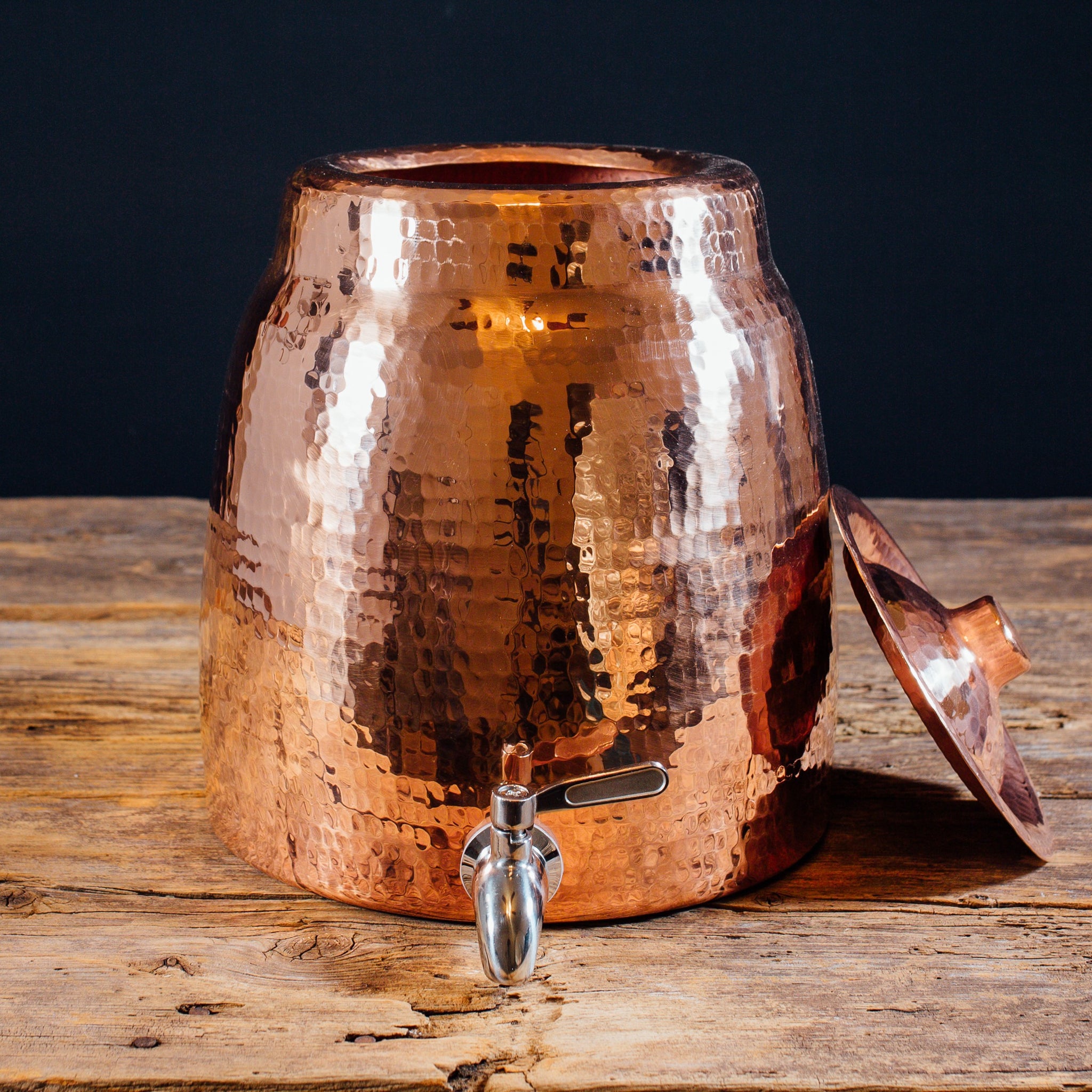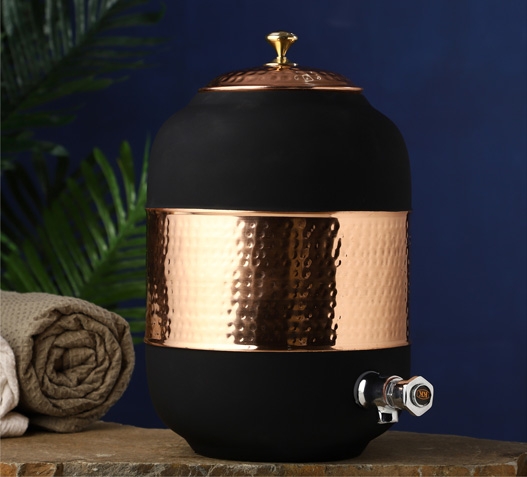Exploring the Versatility and Sturdiness of Ingenious Copper Products in Modern Style
Exploring the Versatility and Sturdiness of Ingenious Copper Products in Modern Style
Blog Article
Exploring the Diverse Applications of Copper Products in Modern Industries
From boosting the effectiveness of electrical systems to playing an essential role in eco-friendly power technologies, the adaptability of copper is obvious. As markets increasingly focus on development and sustainability, the varied applications of copper call for a closer evaluation, specifically regarding their potential impact on future ecological methods and technological innovations.
Electrical Applications of Copper
Copper is a vital product in the electric sector, accounting for about 60% of the complete demand for non-ferrous steels around the world - Copper Products. Its premium electrical conductivity, which is nearly twice that of light weight aluminum, makes it the preferred selection for a variety of electric applications. From circuitry systems in industrial and household structures to high-voltage power transmission lines, copper makes sure efficiency and integrity in electrical energy delivery
In addition to wiring, copper is essential to the manufacturing of electric parts such as electric motors, transformers, and generators. These elements leverage copper's thermal conductivity and malleability, important for warmth dissipation and effective efficiency. Furthermore, copper's resistance to rust improves the life expectancy and durability of electric systems, making it a cost-effective solution in the long-term.
The growth of renewable power sources, such as solar and wind power, has even more increased the demand for copper in electrical applications. As markets change towards lasting energy solutions, copper's role comes to be a lot more important. In general, the adaptability and performance attributes of copper strengthen its status as a keystone product within the electrical field, driving development and performance across different applications.
Plumbing and Piping Solutions
In modern-day pipes systems, the selection of materials considerably impacts both functionality and long life. Copper has actually become a favored option due to its one-of-a-kind residential properties, including rust resistance and antimicrobial qualities. These characteristics guarantee that copper piping remains sturdy and risk-free for moving drinkable water, a crucial consideration in household and business applications.
Among the crucial benefits of copper in pipes is its capacity to hold up against heats and pressures, making it ideal for a variety of applications, from warm water systems to heating and cooling down networks. In addition, copper's flexibility enables easier installation in complicated piping formats, minimizing the risk of leakages and failures.
Another noteworthy benefit is copper's long life expectancy, typically exceeding 50 years with correct upkeep. This long life not only lessens replacement expenses yet additionally contributes to sustainable techniques by lowering waste. Moreover, copper's recyclability straightens with contemporary environmental standards, advertising a circular economic situation within the plumbing market.
Copper in Renewable Power
The convenience of copper extends past pipes applications, playing a vital function in the sustainable energy field. In solar panels, copper is utilized in photovoltaic or pv cells and wiring, helping with reliable energy conversion and transmission.

In addition, as the worldwide demand for electric cars (EVs) increases, copper's role in battery systems and billing infrastructure comes to be much more considerable. The material's ability to conduct electricity effectively is essential to the efficiency of EV batteries, boosting variety and charging rate.
Copper's Function in Electronic devices
Electronics manufacturing depends heavily on copper's remarkable residential or commercial properties, particularly its high electric conductivity and thermal effectiveness. These features make copper an optimal choice for a wide variety of digital components, including ports, motherboard, and circuitry. The steel's capacity to successfully transmit electric signals makes certain minimal energy loss, which is vital in high-performance digital gadgets.
Additionally, copper's thermal conductivity plays a considerable duty in warmth dissipation, safeguarding delicate components from overheating. This is specifically important in modern electronics, where compact styles bring about enhanced heat generation. Copper is also favored for its pliability and ductility, allowing it to be conveniently formed right into elaborate designs that fulfill the needs of sophisticated electronic applications.
With the rise of consumer electronics, telecoms, and electrical cars, the demand for copper in the electronics field proceeds to grow. Hence, copper remains a foundation material in the ever-expanding area of electronics.
Cutting-edge Utilizes in Manufacturing

One noteworthy application is in additive production, where copper-based materials are utilized in 3D printing processes. This enables the development of light-weight components and intricate geometries, especially in the aerospace and automotive fields. In addition, copper's thermal conductivity makes it a perfect option for heat exchangers, improving performance in industrial cooling systems.
In addition, the rise of clever manufacturing has seen the unification of copper in IoT gadgets, where its conductive abilities support innovative noticing innovations. In the realm of renewable resource, copper is essential in the production of photovoltaic panels and wind generators, facilitating extra reliable energy conversion and circulation.
As industries pursue sustainability and technology, copper's flexibility and linked here performance remain to position it as an essential product, driving improvements in manufacturing and adding to the growth of smarter, a lot more effective products.
Final Thought
In recap, copper products show amazing versatility throughout various contemporary sectors. Copper Products. Their exceptional conductivity boosts electrical applications, while rust resistance makes sure reliability in plumbing. The integral duty of copper in renewable resource and its crucial function in electronics underscore its importance beforehand lasting methods. Additionally, ingenious usages in producing emphasize copper's adaptability and enduring value. Jointly, these applications illustrate copper's essential contribution to technological progression and commercial performance in contemporary society.
From improving the performance of electric systems to playing an essential role in sustainable power innovations, the versatility of copper is noticeable. As markets progressively focus on advancement and sustainability, the varied applications of copper call for a closer examination, specifically concerning their possible influence on future technical innovations and ecological practices.
The growth of renewable energy sources, such as solar and wind power, has actually additionally raised the need for copper in electric applications. go right here Generally, the versatility and efficiency features of copper strengthen its status as a keystone material within the electrical industry, driving development and performance across numerous applications.
The convenience of copper prolongs past pipes applications, playing an essential role in the sustainable power sector.
Report this page